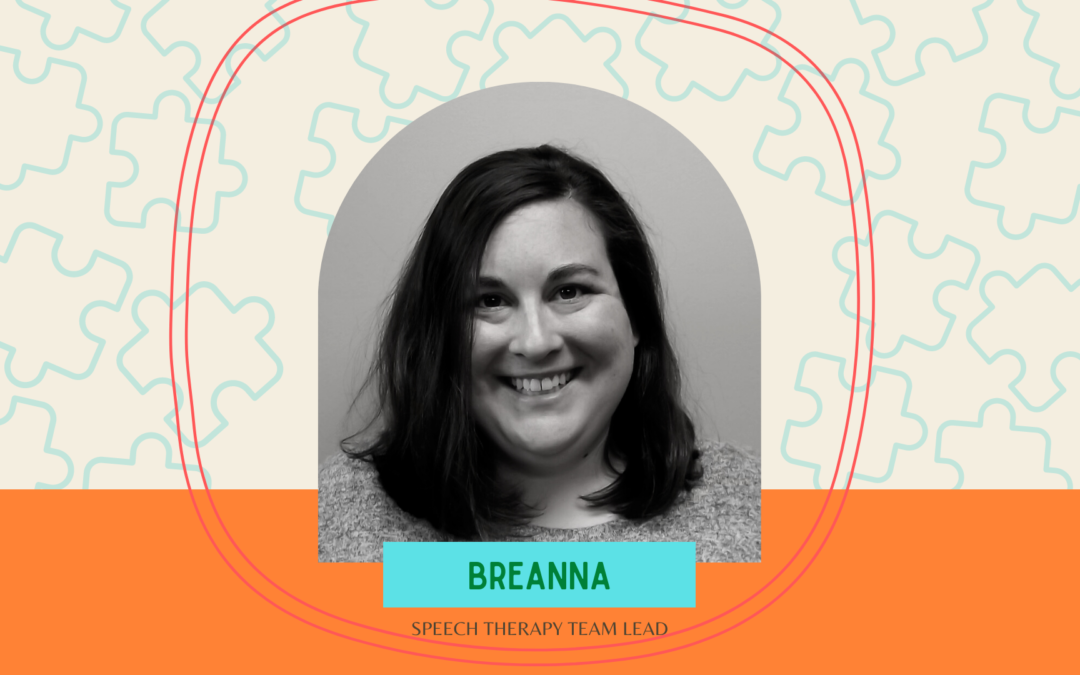Hi! My name is Breanna and I’m a speech therapist with Partners in Excellence at the Winona location. I have been with Partners for over five years. One of my favorite parts of my job is getting to work with Augmentative and Alternative Communication (AAC) devices! The American Speech Language Hearing Association defines AAC as: “a variety of techniques and tools, including picture communication boards, line drawings, speech-generating devices (SGDs), tangible objects, manual signs, gestures, and finger spelling, to help the individual express thoughts, wants and needs, feelings, and ideas.” I define AAC as a way to open up the world for my clients. The most common forms of AAC that we use at Partners are PECS (Picture Exchange Communication) and high-tech speech generating devices.
I will never forget my first AAC evaluation at Partners. It was an older child (about 6 years old), who had not previously used any form of AAC. We put a high-tech device in front of him to explore and what happened next was nothing short of magic. Before we knew it, he was clicking around, finding his favorite toys, labeling colors, and SPELLING, yes spelling! There was not a dry eye in the room. Now, not everyone child learns to use an AAC device that fast. Sometimes it takes weeks or months of trying and failing and trying again to find the right system for each child, but in the end its always worth the journey.
Unfortunately, there are still many misconceptions or myths about AAC that exist today. Parents often have questions and concerns when we first start introducing AAC to their child about the impact it will have on their child’s language development.
Here are the most common “myths” about AAC (Romski):
Myth 1: AAC is a “last resort” in speech-language intervention
Myth 2: AAC hinders or stops further speech development
Myth 3: Children must have a certain skill set to benefit from AAC
Myth 4: Speech generating devices are only for children with intact cognition
Myth 5: Children have to be a certain age to be able to benefit from AAC
And here’s what we know about theses myths:
Myth 1 and 2: Parents often assume that when therapists introduce AAC, we are “giving up” on vocal communication. After years of research studies have shown that AAC will not “hinder or stop” further speech development, in fact there is emerging research to the contrary, that high-tech speech generating devices may aide in further speech development. High-tech devices provide children a consistent model for vocal approximations.
Myth 3 and 4: Children do not need to have a certain set of language or cognitive skills prior introducing AAC, in fact the opposite is true. By providing a communication system (AAC) the child is also provided with language and learning opportunities that can facilitate communication and cognitive development, such as communication intent, social skills, symbolic representation.
Myth 5: Even parents of neurotypical children use AAC from very early on in the form of sign language and gestures. Research has shown that children do not need to be a certain age to benefit from the use of AAC and has shown that children of any age can benefit from the use of communication supports.
Like most things for our clients with Autism, AAC is a puzzle, it requires problem solving, creative thinking, and hard work to find a solution that works for each child. If you have a child at Partners in Excellence who you feel would benefit from an AAC evaluation please reach out to your child Speech Therapist or Program Supervisor for more information!
Sources
https://www.asha.org/practice-portal/professional-issues/augmentative-and-alternative-communication/
Romski, MaryAnn PhD, CCC-SLP; Sevcik, Rose A. PhD Augmentative Communication and Early Intervention: Myths and Realities, Infants & Young Children: July-September 2005 – Volume 18 – Issue 3 – p 174-185


Recent Comments